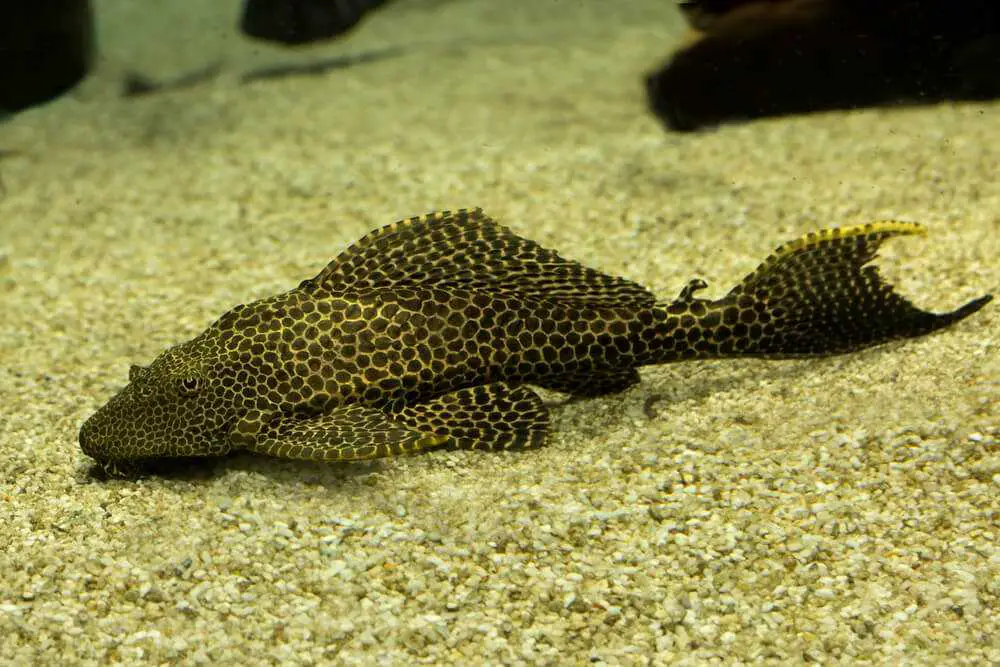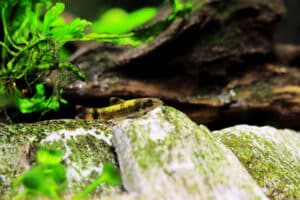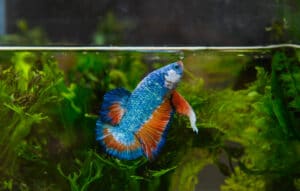Are you worried about your plecos snacking on your adorable fry? Then you’ve come to the right place!
From understanding the tips to protect fry from plecos to finding alternative tank mates for cleaning duties, we’ve got you covered. So without further ado, let’s dive in!
Do Plecos Eat Fry?

Though it’s less likely, it is possible for plecos to nibble on fry if given the opportunity. However, there are some key things you can consider to prevent this from happening.
First, it’s vital to realize that plecos are typically found at the substrate’s bottom, where they suction up whatever happens to fall into their mouths.
In other words, if your fry choose to linger around at the tank’s base, they might get eaten. If you want to keep this from happening, provide your fry with plenty of cover, including plants and big gravels.
Placing a strong emphasis on feeding your plecos will also help deter them from snacking on your fry. If you keep your pleco properly nourished, it won’t feel the need to graze on your fry.
The majority of plecos are docile and won’t bother other fish in a community aquarium. It’s not uncommon for them to ignore other fish altogether and focus solely on eating and maintaining their own personal space.
Finally, it’s worth noting that plecos prefer more dead or sick fry. Plecos are less likely to bother your fry if they are healthy and active.
When Are Fry At More Risk From Plecos?
It’s important to keep a sharp-eye when it comes to protecting your fry from potential predators. But when are fry at the most risk of getting eaten by plecos?
The answer is simple: at night. That’s because plecos are nocturnal creatures that are most active during the hours of darkness.
While your plecos may seem content to lounge around during the day, at night they come alive and start hunting for food. This means that your fry may be at greater risk of being eaten while they are sleeping and less able to defend themselves.
So what can you do to protect your fry from nocturnal predators? The first step is to provide plenty of hiding places for your fry during the night. This could include plants, rocks, or even small caves or tubes.
By giving your fry a place to hide, you can help them evade any hungry plecos that come their way.
How To Protect Fry From Plecos?
Here are a few tips on how to keep your fry safe from your bottom-dwelling friends:
#1. Use A Breeder Net:
One simple way to protect your fry from plecos is to use a breeder net to separate them in the same tank. This small, mesh net can be placed over a section of the tank to create a protected area for your fry.
The plecos won’t be able to get to the fry, but the fry will still be able to swim around and interact with their surroundings.
#2. Separate The Fry In Another Tank:
Another option is to separate your fry into a separate tank entirely. This will keep them completely out of reach of any plecos, and also allows you to keep a closer eye on their health and well-being.
If you go this route, make sure to keep the fry tank clean and well-maintained, as young fish are especially sensitive to poor water conditions.
#3. Provide Plenty Of Hiding Places:
Giving your fry plenty of places to hide can also help protect them from plecos. This could include plants, rocks, or small caves or tubes. By giving your fry somewhere to retreat to, you can help them evade any hungry plecos that come their way.
#4. Keep The Plecos Well-Fed:
A well-fed pleco is less likely to go after your fry as a snack. Make sure to provide your plecos with a varied and nutritious diet to keep them satisfied and less likely to hunt for food.
Read Related: Do Plecos Take Rest And Sleep?
Alternative Tank Species To House With Fry For Tank Cleaning
If you’re concerned about the safety of your fry and want to find alternative tank mates for cleaning duties, there are a few options to consider.
Amano shrimp, and Nerite snails are all great choices for keeping your tank clean without posing a threat to your fry.
Related Read: Can Plecos Live With Shrimps?
Amano shrimps are an excellent choice for controlling algae in your tank. Amano shrimps are a popular choice for algae control in home aquariums. These small, translucent shrimp are native to Japan and are named after the famous aquascaper Takashi Amano.
They are known for their voracious appetites for algae and are highly effective at controlling algae growth in tanks.
In addition to their algae-eating abilities, Amano shrimps are also peaceful and won’t bother your fry or other tank inhabitants.
One of the benefits of using Amano shrimps for algae control is that they are low-maintenance and easy to care for.
They do best in tanks with a well-established filter system and a stable pH level. They also prefer a tank with plenty of hiding places, such as plants and rocks, to feel secure.
Amano shrimps are a great choice for controlling algae in tanks with fry, as they won’t pose a threat to the smaller fish. They are a peaceful species that can coexist peacefully with other tank inhabitants, making them a great addition to any community tank.
Nerite snails are another popular choice for algae control. These small, decorative snails are known for their attractive shells and are great at eating algae without posing a threat to your fry.
Nerite snails are mainly herbivorous and primarily feed on algae and other forms of aquatic vegetation, so they make another great tankmate for fry.
See Related: Will Mollies Eat Guppy Fry?
Wrapping Up
While it is possible for plecos to eat fry, there are steps you can take to prevent it and alternative tank mates you can consider to keep your tank clean without risking the safety of your fry.
With a little bit of planning and attention, you can ensure that your fry and plecos can coexist peacefully in the same tank. Happy fishkeeping!
Read Next: How Many Babies Do Guppies Have?
Hi! I’m Praveen Ghoshal, the founder of eFishkeeping.com. Inspired by my Dad, I got interested in fishkeeping when I was a kid. Since then, I have been involved with this hobby. Currently, I have 3 fish tanks at our home, and I enjoy this hobby with my full family. Read more about me here.








